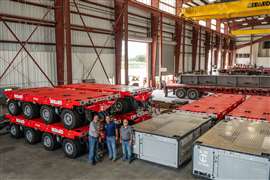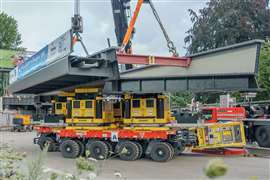Read this article in French German Italian Portuguese Spanish
How to build trust during business changes
27 December 2023
To build trust while restructuring or cutting costs can be a challenging but essential goal for organisations. It’s not uncommon during such times for employees and stakeholders to feel uncertain or anxious. Understandably.
 (Photo credit: Quang Nguyen Vinh)
(Photo credit: Quang Nguyen Vinh)
After all, decisions are being made at the highest level of management but little is known outside that inner circle. Employees still need to do their jobs: serving their external and internal clients, meeting deadlines and moving existing projects and plans forward. Often easier said than done.
At a time when mergers and acquisitions rule the day and, if nothing else, workforce challenges and-or industry-altering innovations threaten to change the way so many of us do business, leaders have to approach the emergent changes in a way that reduces turmoil and also informs, inspires and empowers.
It starts with open and transparent communication. Make a point to keep all stakeholders, including employees, informed about the reasons for cost-cutting or restructuring measures, the expected outcomes and the potential impact. Communicate both the challenges and the opportunities that these changes bring. Ultimately, be honest about the necessity of the changes and the potential sacrifices.
If and when you can, involve employees in decision making. Engage them in the process by seeking their input and involving them where it’s feasible. More often than not, when employees feel their opinions are valued and considered, it leads to greater trust and buy-in.
All the while, you’ll want to prioritise employee well-being. Layoffs and reduced benefits can have a significant impact on morale and trust. Offer support services like counselling or workshops to help employees cope with the change. Also, if possible, continue to invest in employee training and development. This shows a commitment to their growth and can help build trust.
Credible path
Preparation and execution being what it is, organisational readiness and people readiness are two distinct, albeit interconnected, concepts. Both are crucial in the successful implementation of change in an organisation.
Organisational readiness refers to the preparedness of an entire organisation to undertake and support a specific change. It involves assessing the organisation’s ability to adapt, implement and sustain change effectively. People readiness focuses on the individuals in the organisation who will be directly affected by the change. It’s about ensuring employees are prepared, willing and able to embrace that change.
An effective change-management strategy takes both factors into account to ensure a smooth and successful transition. As leaders you have to impress upon employees that cost reductions will not only be fair but productive. Restructuring is not intended to simply permit the company to survive a little longer. It is to set the company on a path to greater prosperity and thus better jobs for those who remain.
Then you also have to deliver. You can’t just embark on a project out of desperation. There has to be a credible path forward for the company – an accessible strategy that proves said change(s) are serving the overall goal.
In the end building and maintaining trust during moments of change takes time and effort but, with careful planning, transparent communication and a focus on the well-being of employees and the long-term success of the organisation, you can minimise the negative impacts and even strengthen both trust and output within your organisation.
STAY CONNECTED


Receive the information you need when you need it through our world-leading magazines, newsletters and daily briefings.
CONNECT WITH THE TEAM












